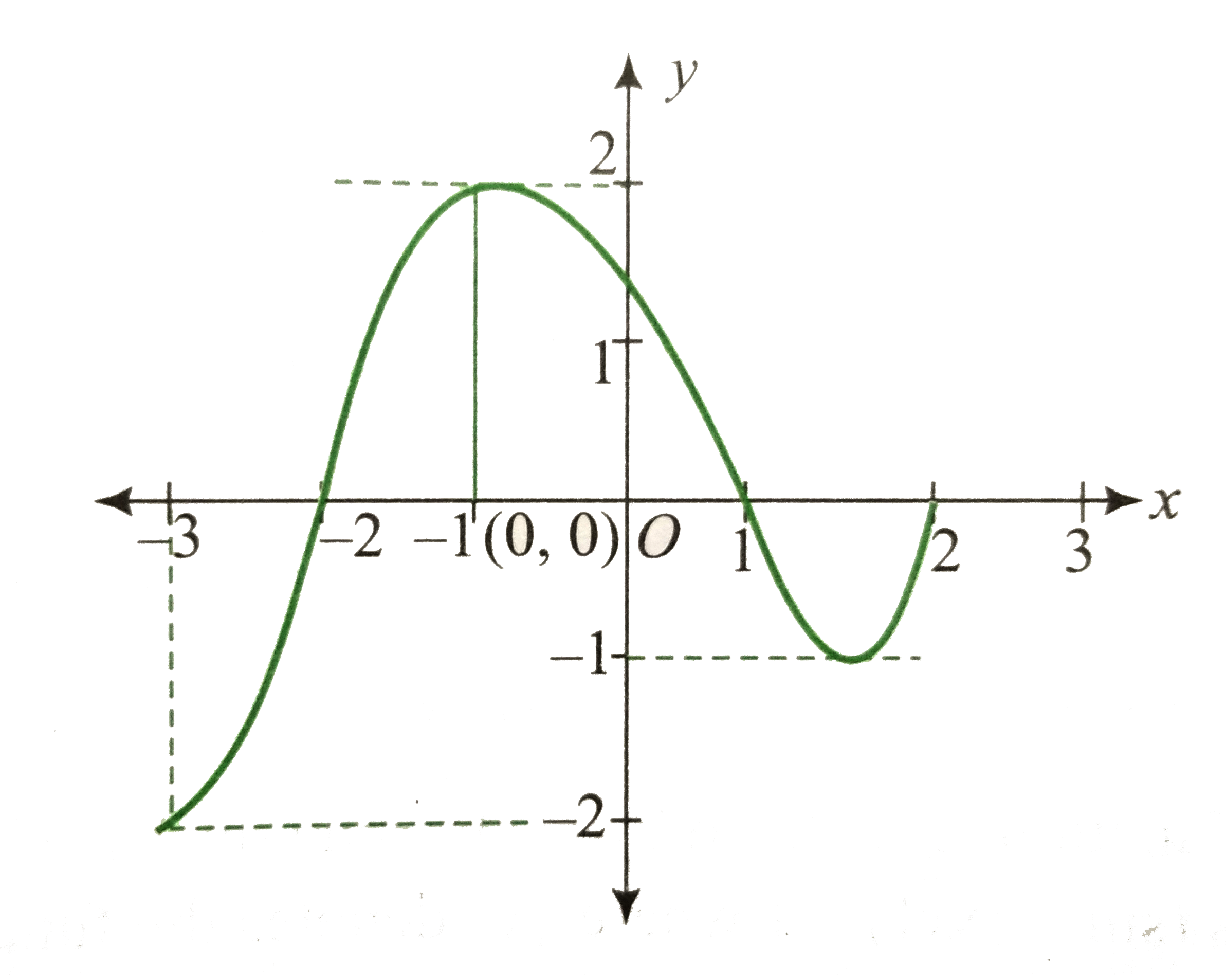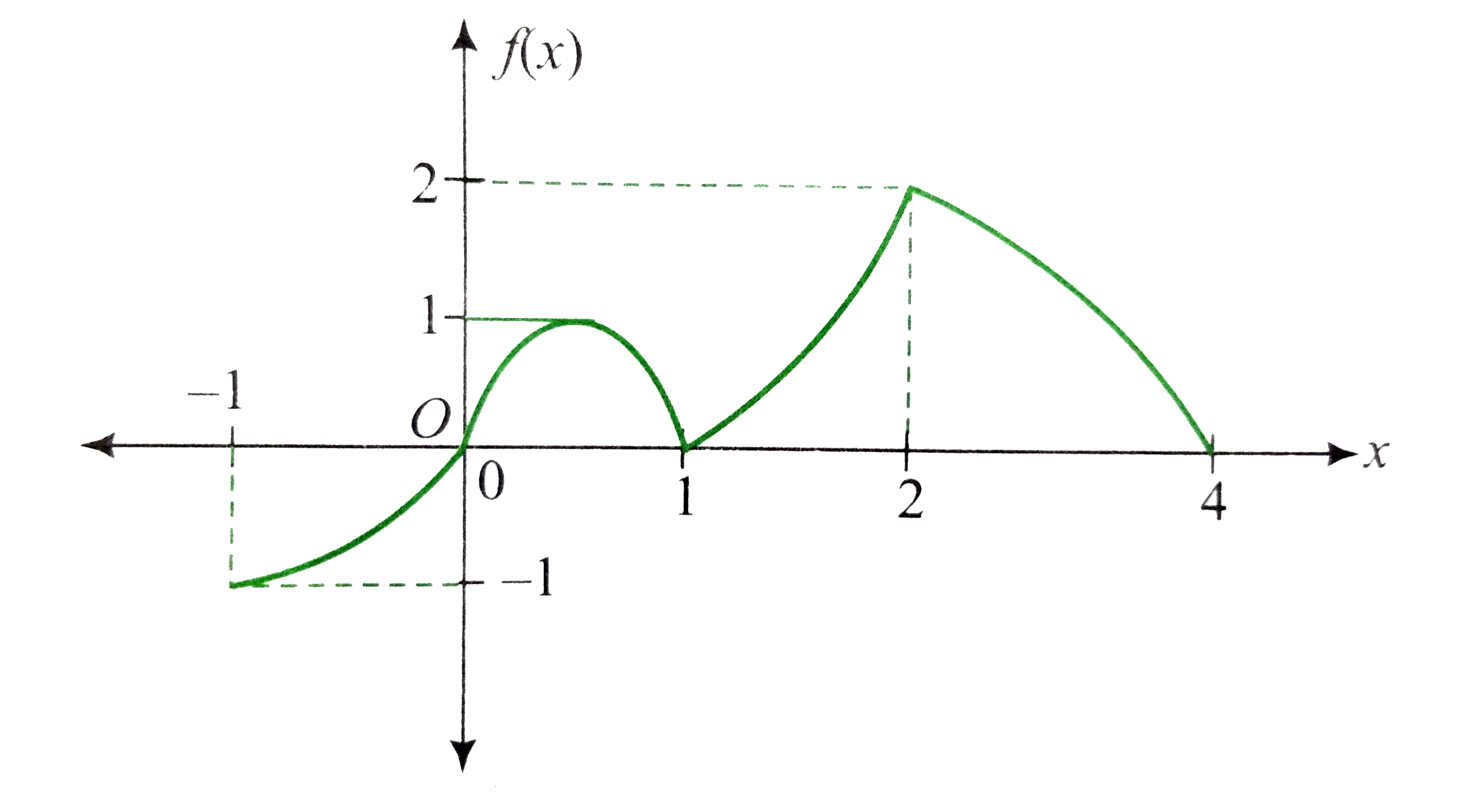Complete Solutions to Exercise (Multiple) of chapter RELATIONS AND FUNCTIONS of Class 12 book with complete answers and questions
| Class 12 | MATHS |
| Chapter | RELATIONS AND FUNCTIONS |
| CENGAGE NEW | Exercise (Multiple) |
| Number Of Questions | 27 |
| Academic Year | 2023-24 |
Let `f(x)=sec^(-1)[1+cos^(2)x],` where [.] denotes the greatest integer function. Then the range of `f(x)` is
01:10View SolutionLet `f : R rarr[-1,oo] and f(x)= ln([|sin 2 x|+|cos 2 x|])` (where[.] is greatest integer function), then -
View SolutionIf `f: RvecNuu{0},` where `f` (area of triangle joining points `P(5,0),Q(8,4)a n dR(x , y)` such that angle PRQ is a right angle `=` number of triangles, then which of the following is true? `f(5)=4` (b) `f(7)=0` `f(6, 25)=2` (d) `f(x)i snot`
View SolutionThe domain of the function `f(x)=(log)_e{(log)_(|sinx|)(x^2-8x+23)-{3/((log)_2|sinx|)}}` contains which of the following interval(s)? (a)`(3,pi)` (b) `(pi,(3pi)/2)` (c) `((3pi)/2,5)` (d) none of these
09:38View SolutionLet `f(x)=sgn(cot^(-1)x)+tan(pi/2[x]),` where `[x]` is the greatest integer function less than or equal to `x ,` then which of the following alternatives is/are true? `f(x)` is many-one but not an even function. `f(x)` is a periodic function. `f(x)` is a bounded function. The graph of `f(x)` remains above the x-axis.
08:18View Solution`f(x)=sqrt(1-sin^(2)x)+sqrt(1+tan^(2)x)` then
View SolutionIf the following functions are defined from `[-1,1]to[-1,1],` select those which are not objective. `sin(s in^(-1)x)` (b) `2/pisin^(-1)(sinx)` `(sgn(x))1N(e^x)` (d) `x^3(sgn(x))`
View SolutionLet `f(x)={x^2-4x+3,x<3x-4,xgeq3` `a n dg(x)={x-3,x<4x^2+2x+2,xgeq4` then which of the following is/are true? `(f+g)(3. 5)=0` `f(g(3))=3` `(fg)(2)=1` (d) `(f-g)(4)=0`
05:07View SolutionLet `f(x)="max"{1+sin x ,1,1-cosx},x in [0,2pi],a n dg(x)=max{1,|x-1|}, x in Rdot` Then (a)`g(f(0))=1` (b) `g(f(1))=1` (c)`f(f(1))=1` (d) `f(g(0))=1+sin1`
05:27View SolutionConsider the function `y=f(x)` satisfying the condition `f(x+1/x)=x^2+1//x^2(x!=0)dot` Then the a)domain of `f(x)i sR` b)domain of `f(x)i sR-(-2,2)` c)range of `f(x)i s[-2,oo]` d)range of `f(x)i s(2,oo)`
05:19View SolutionConsider the real-valued function satisfying `2f(sinx)+f(cosx)=xdot` then the domain of `f(x)i sR` domain of `f(x)i s[-1,1]` range of `f(x)` is `[-(2pi)/3,pi/3]` range of `f(x)i sR`
04:33View SolutionIf `f: R^+vecR^+` is a polynomial function satisfying the functional equation `f(f(x))=6x=f(x),t h e nf(17)` is equal to 17 (b) `51` (c) `34` (d) `-34`
View Solution`f(x)=x^2-2a x+a(a+1),f:[a ,oo)vec[a ,oo)dot` If one of the solution of the equation `f(x)=f^(-1)(x)i s5049 ,` then the other may be 5051 (b) 5048 (c) 5052 (d) 5050
View SolutionWhich of the following function is/are periodic? `(a)f(x)={1,xi sr a t ion a l0,xi si r r a t ion a l` `(b)f(x)={x-[x];`2n
17:39View SolutionLet `f(x)=3/4x+1,f^n(x)b ed efin e da sf^2(x)=f(f(x)),a n dforngeq2,f^(n+1)(x)=f(f^n(x))dotIflambda=(lim)_(nvecoo)f^n(x)` , then `lambda` is independent of `x` `lambda` is a linear polynomial in `x` the line `y=lambda` has slope `0.` the line `4y=lambda` touches the unit circle with centre at the origin.
08:06View Solutionlf the fundamental period of function `f(x)=sinx + cos(sqrt(4-a^2))x` is `4pi`, then the value of a is/are
View Solution`f(x)=sin^(-1)[e^(x)]+sin^(-1)[e^(-x)]` where [.] greatest integer function then
View Solution`[2x]-2[x]=lambda` where [.] represents greatest integer function and {.} represents fractional part of a real number then
View SolutionThe set of all values of x satisfying `{x}=x[xx] " where " [xx]` represents greatest integer function `{xx}` represents fractional part of x
View Solutionabout to only mathematics
02:38View SolutionIf the function / satisfies the relation `f(x+y)+f(x-y)=2f(x),f(y)AAx , y in R and f(0)!=0` , then `(a)` `f(x) is an even function` `(b)` `f(x) is an odd function` `(c)` `If` f(2)=a ,then f(-2)=a` `(d)` `If` f(4)=b ,then f(-4)=-b`
01:57View SolutionLet `f(x)+f(y)=f(xsqrt(1-y^2)+ysqrt(1-x^2))[f(x)` is not identically zero]. Then `f(4x^3-3x)+3f(x)=0` `f(4x^3-3x)=3f(x)` `f(2xsqrt(1-x^2)+2f(x)=0` `f(2xsqrt(1-x^2)=2f(x)`
09:33View SolutionLet `f: RvecR` be a function defined by `f(x+1)=(f(x)-5)/(f(x)-3)AAx in Rdot` Then which of the following statement(s) is/are ture? `f(2008)=f(2004)` `f(2006)=f(2010)` `f(2006)=f(2002)` `f(2006)=f(2018`
View SolutionLet a function `f(x), x ne 0` be such that
`f(x)+f((1)/(x))=f(x)*f((1)/(x))" then " f(x)` can beView Solutionabout to only mathematics
03:10View SolutionThe figure illustrates the graph of the function `y=f(x)` defined in [-3, 2].

Identify the correct statement(s)?View SolutionIf graph of a function `f(x)` which is defined in [-1, 4] is shown in the following figure then identify the correct statement(s).
 View Solution
View Solution
Exercise (Multiple) questions and complete solutions for chapter RELATIONS AND FUNCTIONS of CENGAGE of Class 12
All Exercises from CENGAGE NEW Class 12 MATHS RELATIONS AND FUNCTIONS
- Examples
- Exercise (Comprehension)
- Exercise (Matrix)
- Exercise (Multiple)
- Exercise (Numerical)
- Exercise (Single)
- Exercise 1.1
- Exercise 1.10
- Exercise 1.11
- Exercise 1.12
- Exercise 1.13
- Exercise 1.14
- Exercise 1.15
- Exercise 1.2
- Exercise 1.3
- Exercise 1.4
- Exercise 1.5
- Exercise 1.6
- Exercise 1.7
- Exercise 1.8
- Exercise 1.9
- JEE Previous Year
- Solved Examples And Exercises
